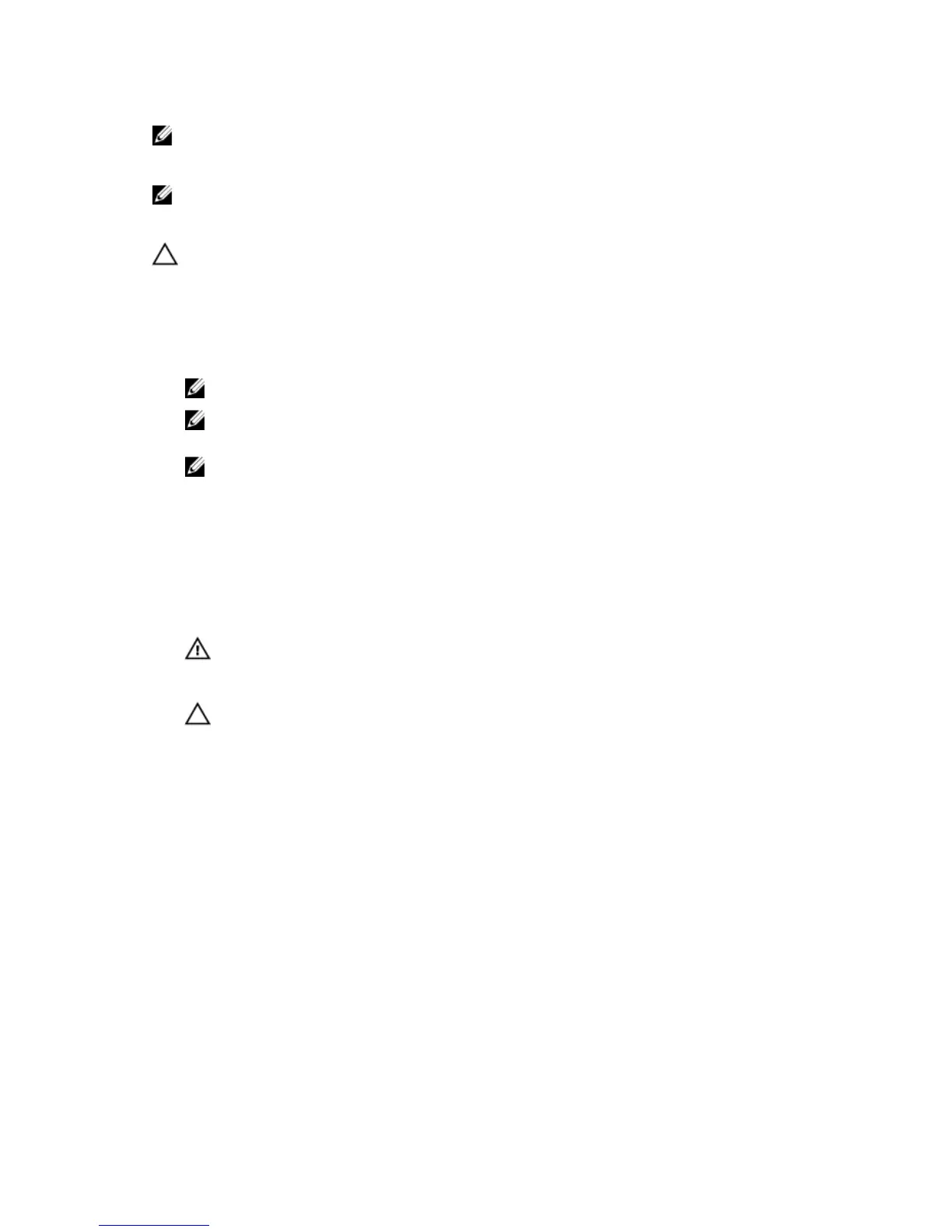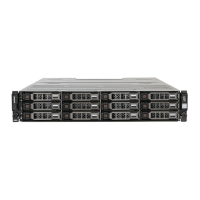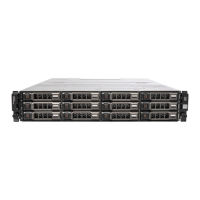NOTE: Before proceeding with this section, see Working With SFP Modules And Fibre Optic Cables
in the Dell PowerVault MD3800f and MD3820f Series Storage Arrays Deployment Guide at
dell.com/powervaultmanuals.
NOTE: Equip yourself with antistatic protection and a replacement small form-factor pluggable
(SFP) transceiver before replacing an SFP transceiver in the RAID controller module. Also, see the
initial setup information for the enclosure to verify LED definitions.
CAUTION: To prevent degraded performance, do not twist, fold, pinch, or step on fibre optic
cables. Do not bend the fibre optic cables tighter than a 5 cm (2 inch) radius.
1. If possible, use the MD Storage Manager to create, save, and print a new storage array profile.
2. If the Recovery Guru directed you to replace a failed RAID controller module, go to step 3, else run
the Recovery Guru to identify the failed component.
3. Unpack the new SFP transceiver.
NOTE: Ensure that the SFP transceiver is replaced by the same type.
NOTE: Set the new SFP transceiver on a dry, level surface near the RAID controller module, the
RAID controller module enclosure, or the expansion enclosure.
NOTE: Save all the packing materials in case you need to return the SFP transceiver.
4. To locate a failed SFP transceiver, view the FC IN (host channel) speed LEDs on the front of the RAID
controller modules. If an SFP transceiver has failed, both FC IN speed LEDs for a particular port are
off.
• If both FC IN speed LEDs are off for a particular port with a known good cable, the SFP
transceiver must be replaced. Go to step 6.
• If at least one FC IN speed LED is on for a particular port, the SFP transceiver is functional. The FC
IN speed LEDs indicate a channel speed of 4 Gbps, 8 Gbps, or 16 Gbps. Ensure that the speed
indicated by the LEDs is what is expected.
WARNING: Data processing environments can contain equipment transmitting on system
links with laser modules that operate at greater than Class 1 power levels. Never look into the
end of an optical fiber cable or open receptacle.
CAUTION: To prevent degraded performance, do not twist, fold, pinch, or step on fiber optic
cables. Do not bend the fiber optic cables tighter than a 5 cm (2 inch) radius.
5. If present, disconnect the fiber optic cable from the failed SFP transceiver.
6. Remove the failed SFP transceiver from the interface port.
35

